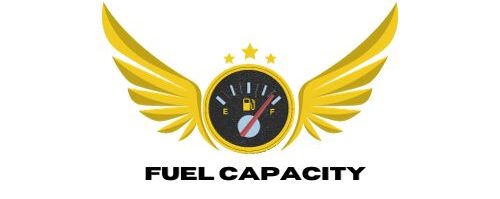When it comes to maintaining your 2008 Ford F250, understanding the vehicle’s oil capacity is crucial. This comprehensive guide is designed to equip you with all the necessary information to ensure your truck runs smoothly, efficiently, and for as long as possible.
Engine Specifications
Under the hood, the Triton V8 engine is a workhorse, known for its reliability and power. This engine boasts specific design features, which include three valves per cylinder and a single overhead camshaft configuration. Performance characteristics vary slightly across different model variations, so it’s important to know the specifics of your vehicle.
Oil Capacity Specifications
The oil capacity for the 2008 Ford F250 5.4 engine is crucial for maintaining the engine’s health. The correct oil capacity is 7 quarts (6.6 liters) with the filter change. Using the recommended oil types, such as the Motorcraft SAE 5W-20 Premium Synthetic Blend Motor Oil, and adhering to the correct viscosity is key to optimal engine performance. Deviating from these specifications can lead to inadequate lubrication or excessive pressure, both of which can cause engine damage.
Checking Oil Levels
It’s advisable to check your oil level every 3,000 miles or as often as monthly. To check the oil level:
- Park your vehicle on level ground and wait for the engine to cool.
- Open the hood and locate the dipstick.
- Pull the dipstick out, wipe it clean, reinsert it fully, and then pull it out again to check the level.
- The oil should be between the minimum and maximum marks. If it’s below, you need to add more oil.
Oil Change Steps and Procedures
Changing the oil in your 2008 Ford F250 5.4 is straightforward if you’re mechanically inclined. You’ll need an oil filter wrench, a suitable container for the old oil, and a funnel.
Certainly! Let’s continue with the step-by-step instructions for changing the oil in your 2008 Ford F250 5.4-liter engine.
Oil Change Steps and Procedures
- Assemble your tools and materials: You’ll need a drain pan, socket wrench, oil filter wrench, new oil filter, new oil (7 quarts of 5W-20), funnel, and perhaps an oil filter gasket.
- Warm up your engine: Run the engine for a few minutes to warm up the oil, which helps it drain out more easily.
- Drain the old oil: Position your drain pan under the oil pan and remove the drain plug with the socket wrench. Allow the oil to drain completely. Remember to replace the drain plug securely afterward.
- Replace the oil filter: Use the oil filter wrench to remove the old filter. Before installing the new filter, apply a small amount of oil to the gasket for a better seal. Screw in the new filter by hand.
- Add new oil: Remove the oil fill cap and use a funnel to pour in the new oil. Check the level with the dipstick as you fill to avoid overfilling.
- Check for leaks: After filling, turn on the engine and let it run for a minute. Check for any leaks from the oil drain plug and around the filter.
- Dispose of old oil: Take the old oil to a recycling center or auto parts store that accepts used oil.
Tips for a safe and clean oil change
- Always let the engine cool down before starting the oil change to avoid burns.
- Wear gloves to protect your skin from old oil, which can contain contaminants.
- Use a piece of cardboard or an old blanket to keep the ground clean.
Oil Change Intervals
For a 2008 Ford F250 with a 5.4-liter engine, it is recommended to change the oil every 5,000 to 7,500 miles, depending on your driving habits. Severe conditions, such as towing or extensive idling, might necessitate more frequent changes.
Troubleshooting Common Oil-Related Issues
Leaks typically occur at the oil pan gasket or the oil filter. Overfills can be avoided by carefully measuring the oil as you fill and checking with the dipstick.
DIY Vs. Professional Oil Changes
While DIY oil changes can save money and offer a sense of accomplishment, professional services
ensure convenience and often come with multi-point inspections. Here’s a breakdown of these options:
DIY Oil Changes:
Pros:
- Can be more cost-effective.
- You have full control over the products used.
- Provides a hands-on understanding of your vehicle’s mechanics.
Cons:
- Requires time, tools, and space.
- Potential for mistakes if not done properly.
- Disposal of used oil must be handled by you.
Professional Oil Changes:
Pros:
- Convenience and time-saving.
- Typically includes a vehicle inspection.
- No need to deal with used oil.
Cons:
- More expensive over long term.
- Dependent on the quality of the service provider.
- Less control over oil and filter brands used.
Approximate Cost Analysis
DIY oil change costs will vary depending on the price of oil and filters purchased, but typically range from $20 to $50. Professional oil change services can range from $30 to $100 or more, depending on the service location and any additional services performed.
Proper Disposal of Used Oil
One of the most crucial steps in the oil change process is the environmentally responsible disposal of your old oil. Most auto parts stores and service centers will accept used motor oil for recycling. Never dispose of oil in the trash, down a drain, or on the ground as it can contaminate water sources and harm wildlife.
Conclusion
In conclusion, the 2008 Ford F250 with a 5.4-liter engine is a robust and reliable vehicle that, with proper maintenance, can serve you for many miles. Adhering to the recommended oil capacity and change intervals is a small but significant step in ensuring your truck’s performance and longevity.
- 10 Best JCR Offroad Sliders Reviewed for Durability and Performance Amazon - 2 October 2025
- 10 Best MetalCloak Sliders Review and Buying Guide Amazon - 2 October 2025
- 10 Best Review of GenRight Rock Sliders for Off-Road Protection Amazon - 2 October 2025
